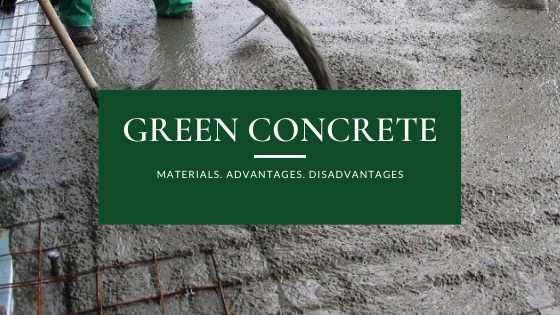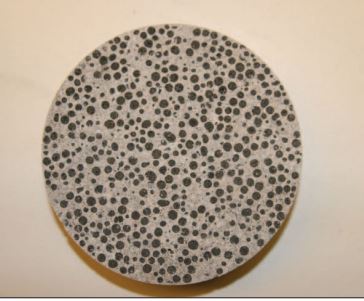
Green concrete is concrete which is eco-friendly, uses less energy in its production and produces less carbon dioxide than ordinary concrete.
When people hear green concrete, they associate it with the concrete that is coloured with green pigment. But Green concrete does not refer to the colour of the concrete, rather than it indicates its environmental sustainability and eco-friendliness.
Also Read: Green Buildings: Future of Construction
Materials used in Green Concrete
- Fly ash
- Glass aggregates
- Rice husk ash
- Recycled demolition waste aggregates
- Ground Granulated Blast Furnace Slag
- Manufactured sand
- Recycled concrete aggregate
- Metakaolin
- Blast furnace slag
- Silica fume
The Need for Green Concrete
Cement-based materials are the most abundantly manufactured material in the world. Today’s trend is the Green building in our country. The potential environmental benefit of green concrete which is used to build structures is huge.
Green Concrete is eco-friendly, it saves the environment by using waste products generated by industries in various forms like rice husk ash, micro silica, etc. to make resource-saving concrete structures. Use of these concrete helps in saving energy, emissions, wastewater. It is very inexpensive to produce as it uses waste products directly as a partial substitute for cement, thus saving energy consumption in the production of per unit of cement.
It has greater strength and durability than the normal concrete. Construction industry generally accounts for a massive environmental impact because of its high demand for energy. As a result of the awareness built during the past few years about the greenhouse gases and its effects on nature, we have become conscious about our future.
Environmental benefits of using Green Concrete
Reduces Energy Consumption:
If less Portland cement and more fly ash are used during the mixing of concrete, then less energy is required. The materials used in Portland cement require huge amounts of coal or natural gas to heat it. As Fly ash already exists in by-product form of another industrial process, so you are not expending much more energy to use it to create green concrete.
Green concrete reduces energy consumption in such a way that a building constructed from it is more resistant to temperature changes and thus saving heating and cooling costs.
Reduces Carbon Dioxide Emissions:
The main constituent of ordinary cement is pulverized limestone, clay, and sand which are heated to a high temperature. This process is responsible for 5% to 8% of all Carbon Dioxide emissions worldwide. The manufacturing of green concrete saves approx. 80% of carbon dioxide emissions. As a part of a global effort to reduce emissions, turning to green concrete completely for construction will help considerably.
Advantages of Green Concrete
- Green concrete uses local and recycled materials in concrete production. It reduces disposal problems of industrial waste.
- It reduces overall cement consumption. It reduces almost 30% CO2 emission and helps in sustainable development without environmental pollution.
- It gives better workability than normal concrete.
- It has good thermal and fire resistance properties.
- It reduces the effect of creep and shrinkage in concrete.
- It requires less maintenance and repairs.
- It is economical as compared to conventional concrete.
- It has better damping resistance in buildings.
Disadvantages of Green Concrete
- It has less split tensile strength than conventional concrete.
- The lifespan of structures build with green concrete is less than conventional concrete structures.
- Water absorption is more than ordinary concrete.
Scope of Green Concrete in India
Green concrete is new and revolutionised concept in the history of concrete industry. As green concrete is made with industrial waste it does take more time to come to India. As Industries in India are facing problem to dispose of waste and it also reduces environmental impact with a reduction in Co2 emission. Use of green concrete reduces a lot of waste of several products.
Green concrete is capable to fill the requirements of sustainable development as it is characterized by the application of industrial wastes to reduce consumption of natural resources, energy and pollution of the environment.
Also Read: Self-healing Concrete


Great information that I am going to teach in the class